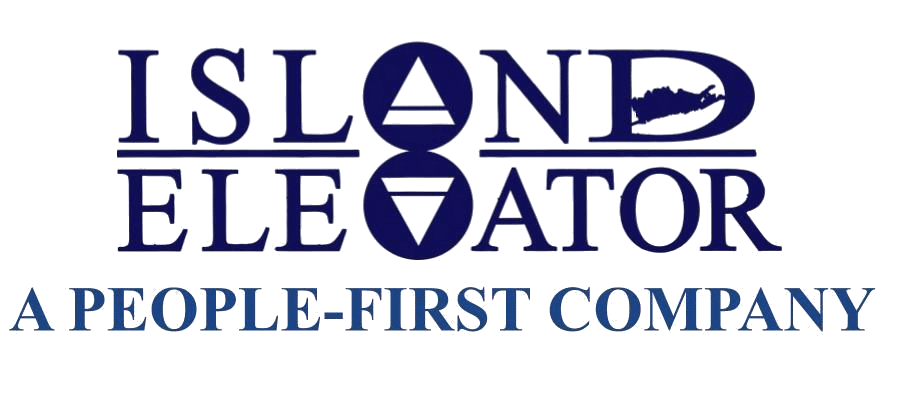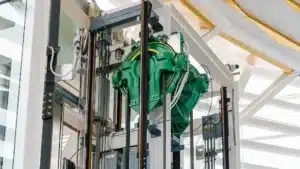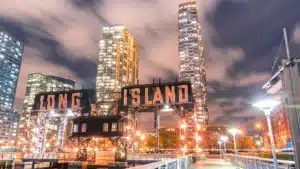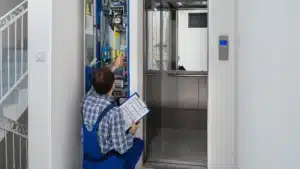

While upgrading your lift may seem a costly investment, its long-term implications include significant energy and repair cost savings. It also results in an overall improvement in passenger’s safety. However, most people do not know when to modernize their elevators. The clearest indicator includes expensive service calls. Besides, it is time for an elevator upgrade if repair and maintenance costs outweigh the benefits accrued from its regular use.
What is The Elevator Lifespan?
Your elevators can last for decades if you ensure that it is well maintained. A lift can last between 35 and 45 years with regular upkeep and on-time repairs. But ultimately, like any other machinery, it will deteriorate due to constant wear and tear. As a result, it will no longer perform optimally, prompting for elevator replacement. Here is all you should know about different elevator lifespans:
- Hydraulic elevators last between 20 and 25 years if well maintained.
- Overhead traction elevators can operate optimally for at least 30 years.
- Machine room-less (MRL) traction elevators’ lifespan is between 10 and 15 years.
All building managers and owners should note the individual elevators’ lifespans to plan for elevator upgrade early enough.

Signs it is Time to Consider Elevator Modernization
You will know it is time to consider upgrading your building’s elevator in the following circumstances:
1. Your Elevator is Old
The first factor to consider before modernizing an elevator is its age. Consider updating an elevator that has passed the average life span, 15-25, to minimize different safety risks. However, elevator parts may wear and tear faster in busy buildings such as hotels. Therefore, conduct regular elevator testing and inspections to minimize liability caused by worn-out and outdated elevators.
2. Your Elevator Parts Become Obsolete
Those owning an elevator acknowledge that regular maintenance can extend its useful life. Unfortunately, every elevator reaches the end of its lifespan with time, and finding various elevator parts becomes challenging and sometimes almost impossible.
Often, as the market advances, manufacturers stop producing obsolete parts to fill the trending consumer niche. Replacement parts also become expensive if your elevator has passed the 20-year mark. It remains viable to modernize your elevator to prevent disruptions caused by out-of-service elevators.
3. You Conduct Frequent Repairs that Prompt for Elevator Modernization
Old elevators often require frequent repair. Constant elevator shutdown and repair increases gradually over time. When you realize that repair costs are becoming increasingly higher than the cost of elevator replacement, it is time to hire elevator consultants to help you plan an elevator modernization strategy. Modernizing the elevator will save you from constant costly repairs.
4. You Need to Comply with Safety Standards for modern elevators
One of the most common reasons for upgrading elevators is to enhance passenger safety. Often, elevator users remain susceptible to danger if an elevator operates on outdated technology and equipment. Signs of an elevator that requires modernizing include unexpected shutdowns, unresponsive doors, and unreliable emergency contacts. Therefore, it is time to upgrade your elevator to comply with the latest safety codes.
Remember, old elevators require significant system upgrades to align with Americans with Disabilities (ADA) guidelines, safety standards, and fire codes that keep changing. Besides, modernization guarantee that your elevator design, maintenance, upgrades, and inspection is in line with the NationalElevatorCode
5. You Experience Frequent Elevator Breakdowns
While one breakdown may seem normal, regular elevator breakdowns signal elevator modernization or elevator replacement. One repair after another due to elevator breakdowns is a cause for alarm. Besides, an elevator that stays out of service for a period longer than when it should remain operational requires immediate elevator modernization.
6. You Detect Elevator inefficiency
One of the main signs of an inefficient lift is high energy consumption and repair costs. Rough rides and long wait times may also attribute to inefficiency. Elevator’s energy consumption above 5% of the overall building’s signal for elevator technology modernization. Upgrading the elevator’s system may reduce repair costs and wait times.
7. Your Elevator Requires Aesthetic Upgrades
Most residential buildings elevators are designed to suit the homeowner’s visual appeals. Unfortunately, needs often evolve, or elevator interiors do not appeal to the current tenants. Therefore, consider changing the elevator interior for a comfortable ride and an improved user experience. Besides, you may consider cab renovations of your elevator if it exhibits old styles that do not match your home or hotel decor.

Updating the Look of Your Old Elevator
Instead of replacing your entire elevator system, you may choose to modernize different peripheral parts. However, you should hire a professional elevator technician to conduct elevator testing and inspections. The technician’s recommendations can help you decide whether upgrading the elevator is cheaper than buying a new one. When performing an elevator facelift, you should focus on the following areas:
- Elevator doors: Get new door models at the landings, inside the elevator, and gate.
- Control panels: The elevator control panel buttons fade after years of wear and tear. Therefore, consider replacing the operating panel as you modernize your elevator.
- Lighting
- Handrails
- Call buttons
- Elevator cab flooring
- Ceiling and car panels
- Wall panels.
The best way to warrant that your building is geared towards the digital era is by ensuring that different parts of the elevator system remain up-to-date during its facelift.

Common Types of Elevator Modernization
Here are a few suggestions for reviewing your elevator and potential upgrades needed.
1. Cab Renovations
If your elevator requires an aesthetic change only, you may consider cab renovation. Apartment owners often choose this type of elevator modernization for a design refresh for a mechanically okay elevator. Besides, building owners can also incorporate safety guidelines in the elevators during cab renovations.
2. Stand-Alone Component Upgrades
You may choose to replace one component at a time in this type of elevator modernization. Your technician will conduct elevator testing and inspection to determine whether it requires immediate attention. While this is a short-term solution, ensure that you have an elevator maintenance plan because fixing one component may trigger other elevator modernization needs.
3. Full Elevator Modernization
Often, a significant overhaul of a system update signals for full elevator modernization. This type of modernization improves ride quality, energy consumption, and system efficiency. Full modernization often includes cab renovation. Consider this service to enjoy the benefits of elevator modernization fully.

Island Elevator is Ready to Help!
Island Elevator is here to help you understand all facets of your Elevator Repair, Maintenance, & Modernization costs in the new year. Our team is here to help ensure your home and business vertical transportation equipment receive the regularly scheduled maintenance necessary to help you avoid a major catastrophe, reduce the possibility of a costly repair, and ensure the safety of your passengers, tenants, and family.



